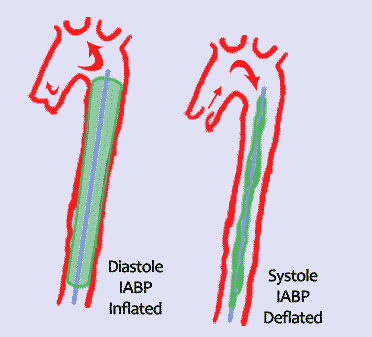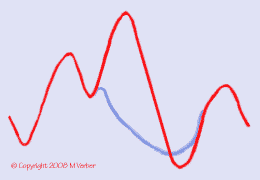IABP: Intra-Aortic Counter Pulsation Balloon Pump
This shows the arterial location and cycles of an IABP
 The key fact is that the balloon of the IABP inflates during diastole, and deflates during systole.
The key fact is that the balloon of the IABP inflates during diastole, and deflates during systole.
This results in an increase in subendocardial diastolic blood flow, and, to a degree, a decrease in LV afterload. Overall this leads to increased cardiac oxygen delivery concomitant with a decrease in myocardial oxygen demand.

The arrows show the direction of blood flow in the aortic root and arch. Recall that the coronary arteries arise in the sinuses of Valsalva, distal to the aortic valve leaflets, and that LV subendocardial blood flow basically occurs only during diastole
A normal IABP pressure trace is shown in the inset to the right, a larger version is found on the next page.
The IABP shown in the video clip to the right, is not positioned properly. It is too high and blocks the SCA.
However, you can appreciate the inflation (diastole) and deflation (systole) of the balloon pump.